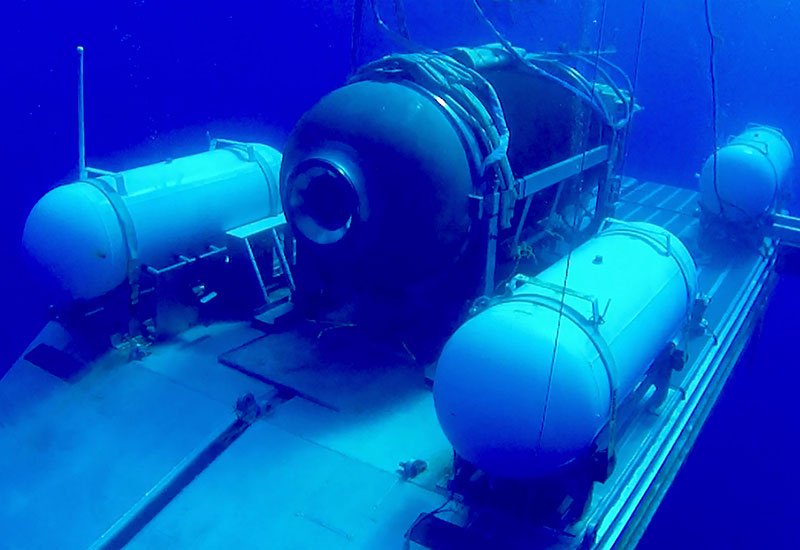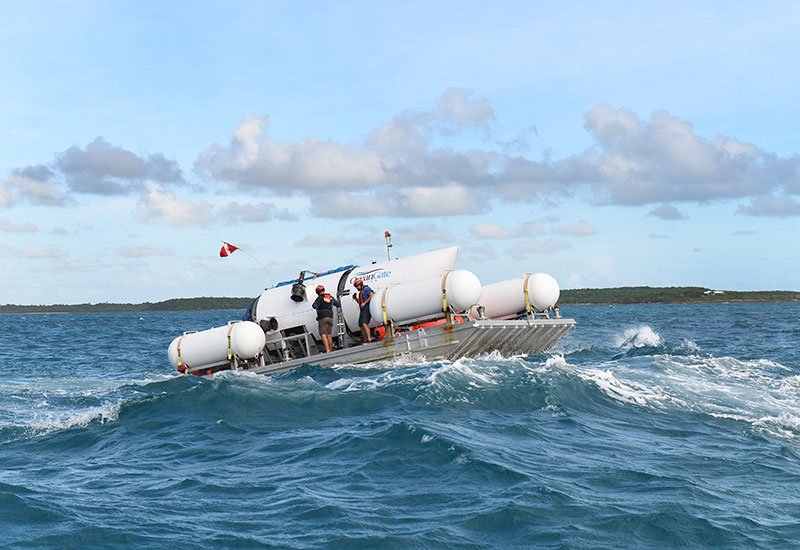Channel 5 slammed for Titanic sub documentary
The third-largest commercial channel in the United Kingdom has come under fire for planning to air a documentary on the missing submersible despite search and rescue efforts still being underway.
Channel 5 is shaking up its Thursday night television schedule with a live special report on OceanGate’s Titan which lost communication with its mothership on Sunday, US time.
The vessel, which has a five-person crew on board, was en route to tour the Titanic’s wreckage, understood to be about 2.5 miles below the ocean’s surface.
Now, authorities are racing against time to find the sub which has less only a few hours left of emergency air before its passengers will no longer be able to breathe.
Titled Titanic Sub: Lost at Sea, the documentary will air at 7 pm UK time and aims to “bring viewers the latest on this story, taking an in-depth look at the extraordinary events”.
It’s understood the production will feature interviews from experts and former passengers of the Titan, as well as people who are “close to those on board”.
Dan Walker, a 5 News presenter, and former Football Focus host, will lead the documentary produced by ITN.
Ian Rumsey, managing director of content for ITN, says the program will capture multiple aspects of the event, from the world’s obsession with the Titanic shipwreck to the rescue of the Titan, according to Independent.

“This program will chart everything from the exploration itself to the rise of extreme tourism, to the rescue attempts, but above all, it will tell a very human story that has captured the nation which is about five people, all with families, who are trapped at the bottom of the ocean,” he said.
“Our expertise and heritage in fast-turnaround documentaries and reputation for responsible filmmaking mean we always treat such stories with great sensitivity.”
But despite the producers vowing to approach the story with sensitivity, the timing of its release has sparked outrage, not only because the search is still ongoing but also because it will air just hours after the vessel runs out of oxygen.
Many have taken to social media to express their concerns about the documentary after several announcements were made regarding it.
Follow the Post’s coverage on the missing Titanic sub and its crew
“Capitalizing on this s–t the day they run out of air is insane,” one person tweeted.
“I was guessing 2024-2025 for a doc/movie but THIS THURSDAY? my god,” said another.
A third tweet read: “Talk about poor taste. The search for these people, whose lives hang in the balance, is still ongoing.
“Trying to make a profit from something that doesn’t even have an official ending yet, but could potentially end in tragedy, is disgusting. Have some respect.”
News.com.au has contacted ITN for comment on the matter.
Rescue teams race against time
Based on calculations from rescuers, there’s believed to be just under six hours of oxygen left on the vessel, with supplies to exhaust by 9.08 pm Thursday night AEST.
Five people are on board the vessel including the CEO of Titan’s manufacturer OceanGate, Stockton Rush, British billionaire Hamish Harding, 73-year-old veteran submarine pilot Paul-Henry Nargeolet, and Pakistani businessman Shahzada Dawood and his son Suleman.
With air levels dwindling rapidly, many questions have been raised about what will happen to those aboard the vessel once they no longer have clean air to breathe.
Dr. Kenneth Ledez, the hyperbaric medicine specialist at Memorial University in Newfoundland, says even if emergency air levels exhaust, those on board may still survive if they’re rescued on time.
“Depending on how long and how low the oxygen has been, will determine what the long-term outcome is,” he told BBC.
“Can people survive after exposure to those conditions? Yes, they could have damage to the nervous system and heart after an extended time, so really, it’s going to be a gradual deterioration.”
Meanwhile, Former navy Captain David Marquet said the group – who are likely 2.5 miles below the ocean surface – are probably thirsty and hungry, however, it’s the oxygen supply that’s key to their survival.
“They’re freezing cold. The water entirely surrounding the ship is at freezing or slightly below. When they exhale, their breath condenses. There’s frost on the inside of the parts of the submarine,” he told CNN.
“They‘re all huddled together trying to conserve their body heat. They’re running low on oxygen and they’re exhaling carbon dioxide.”

However, Richard Garriot de Cayeux, president of the travel and research group The Explorers Club – where Hamish Harding and Paul-Henri Nargeolet are members – remains optimistic the submersible will be found on time in what will be a “positive outcome”.
In a number of statements online, Mr de Cayeux has reassured everyone not to give up, stating a number of plans are in place and are being carried out to help with the search.
“We have much greater confidence that 1) There is cause for hope, based on data from the field — we understand that likely signs of life have been detected at the site; 2) They precisely understand the experienced personnel and tech we can help deploy; 3) We believe they are doing everything possible with all resources they have; and 4) We now have direct lines to the highest levels of Congress, The Coast Guard, air force, navy and The White House thanks to your support,” he wrote.
Mr De Cayeux later added how the sub will be rescued if located.
“1) The French 6km ROV’s will likely attempt to find and push-attach a lift cable. 2) The Navy FADOSS deep recovery crane will try to scoop it up, without crushing it. 3) if the crew survives long enough, and they are surely conserving air, the Magellan has a manipulator arm to attach lift cable. Stay hopeful!.” he said.
Five specialist vessels backed by deep-sea robots and search-and-rescue aircraft were already combing a vast 40,000 square km up to a depth of 4km, but more are on their way, The Sun reports.
Read the full article Here


